Siting Renewable Energy Responsibly
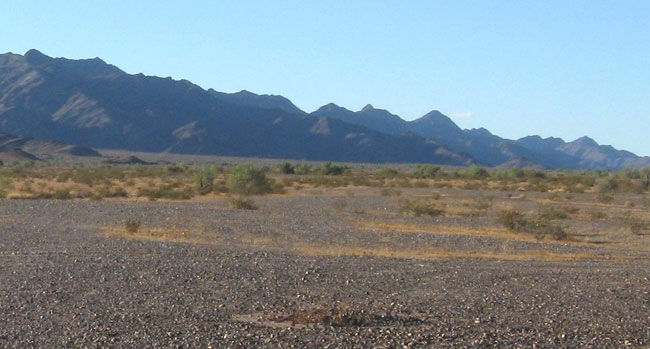
^The desert along the Colorado River terraces is actually a fairly pristine area of natural desert pavement soils that should not be disturbed. But this is the site of the largest solar project in the US, Blythe Solar Power Project by Solar Millennium.
April 30, 2011 - Attempts to site renewable energy sprawl on disturbed or degraded lands have been made, such as the Bureau of Land Management Restoration Design Energy Project (RDEP) in Arizona, but this will not be of much use unless a clear definition of disturbed and degraded lands is agreed upon.
All too often, large renewable energy developers undermine a 4,000 acre parcel of land by placing a “disturbed” label on it based on a few tire tracks and some trash. Often these places have not received the large visitation that most National Parks and Wilderness Areas receive. The level of disturbance can be two to three times greater in popular recreation areas. The Ivanpah Solar Electric Generating System is being built in the Mojave Desert in California. The company, BrightSource repeatedly told people that the 4,000 acres is disturbed. The disturbance was defined as a transmission line, a couple of off-road tracks and the location is about three miles from Primm, Nevada. This site is expected to have many more desert tortoises than expected.
It is also important to factor in that no matter how disturbed the site is, any energy facility needs to be hooked into transmission lines. Transmission often needs to pass through sensitive, undeveloped land. The Devers-Palo Verde line was to originally pass over the Kofa Mountains National Wildlife Refuge. Transmission also impacts private land. In the case of the recently approved Sunrise Powerlink in southern California, 350 private properties had to be seized through Eminent Domain.
We have developed our own “Disturbed Lands Criteria” that we would like to see the Department of the Interior adopt.
Defining “Disturbed” or “Degraded” Lands:
We have broken these down in the following four categories; number one being the most inappropriate and number 4, the built environment being the most appropriate.
1. Pristine lands. These lands are the most inappropriate for development. A tire track or transmission line may run through these lands, but those are not significant enough disturbances to justify solar and wind energy sprawl.
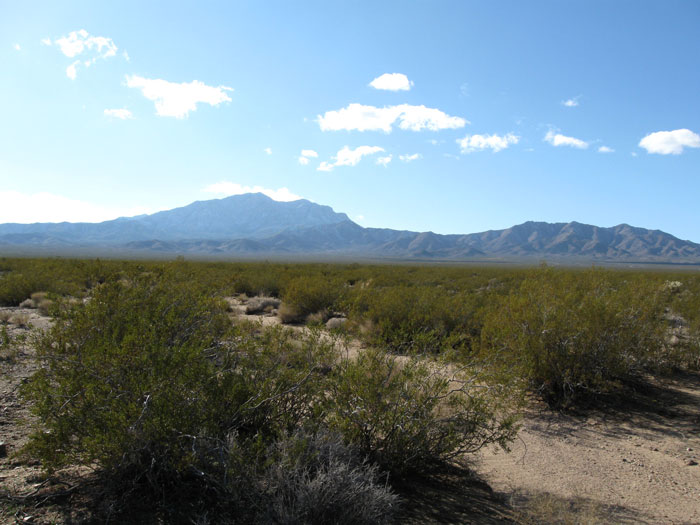
^Ivanpah Valley, California, a healthy thriving Mojave Desert ecosystem that was unfortunately described as disturbed and approved for massive solar development.
2. Agricultural fields. While these lands are disturbed, they have a recovery potential. The landscape has not been altered too dramatically. Siting renewable energy on this land could still impact flora, fauna and visual resources. In the case of the Beacon Project in California, the land is on an old agricultural field, but after a few decades, the native flora and fauna re-colonized the field. They found rare Mojave ground squirrels on the site and 24 desert tortoises. Using old agricultural fields will also create potential transmission siting issues on more pristine lands. The term "brownfileds" is sometimes used here, but needs definition, as some brownfields could be in category 3.
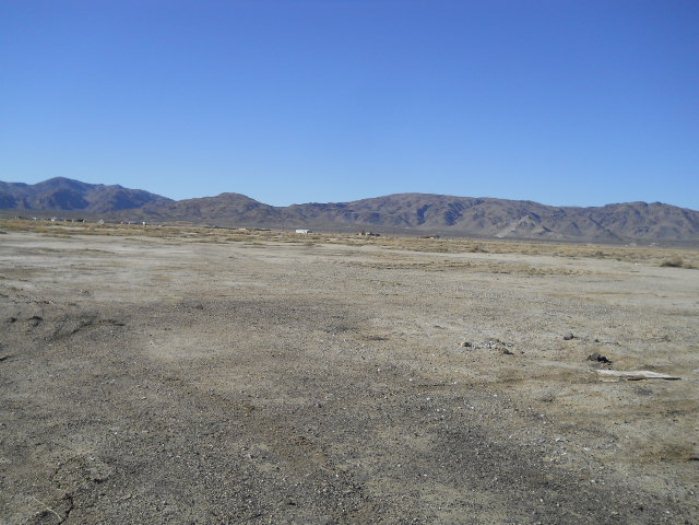
^Old agricultural field in the West Mojave Desert, California.
3. Geologically Altered or Contaminated Landscapes. Strip mines; areas with high selenium contamination from agricultural practices, such as Westlands Water District area of San Joaquin Valley, california; poisoned lands and EPA Superfund sites. Severely degraded lands. These have longer recovery potential. Like number two, this will create transmission siting issues on pristine lands and potential visual issues.
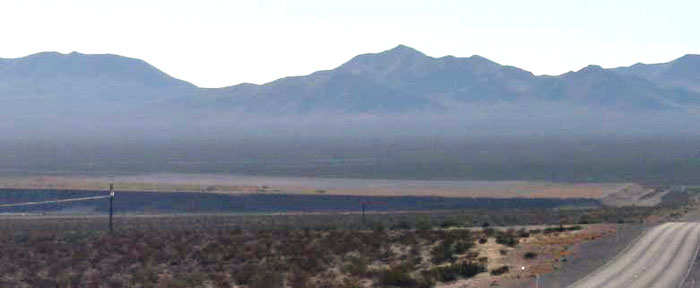
^Leachpad from open pit mining, Nevada.
4. The Built Environment. Roof tops, parking Lots. This is the most impact free and carbon free solution to using renewable energy. The distributed generation alternative should always be the first alternative.
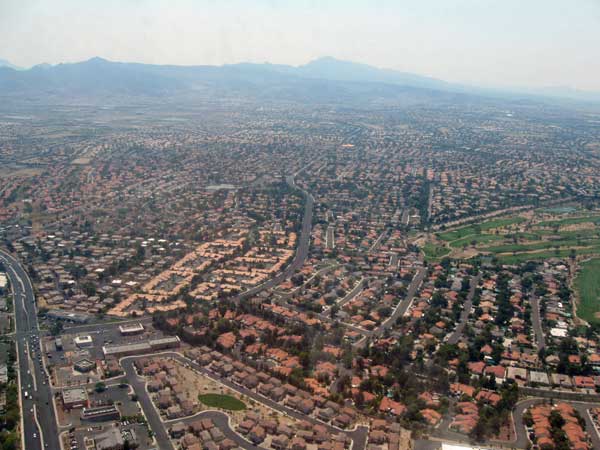
^Las Vegas rooftops.
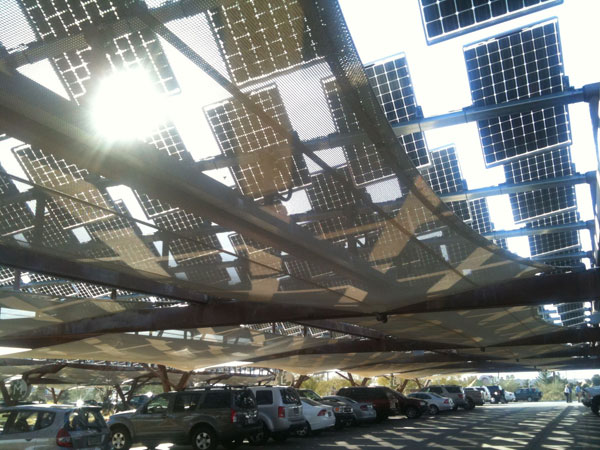
^Solar panels over a parking lot, Springs Preserve in Las Vegas, Nevada.
HOME.....Ivanpah Solar Project.....A Better Way
